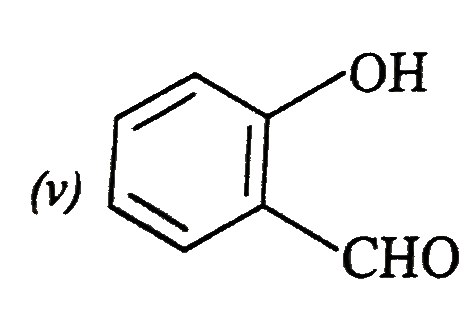Classify the following species as electrophile or nucleophle and explain your choice:
(i) CH3⋅⋅O⋅⋅:Θ
(ii) CH3CO⋅⋅O⋅⋅:Θ
(iii) :⋅⋅Cl⊕⋅⋅
(iv) BF3
(v) (CH3)3⊕C
(vi) CH2=CH2
(vii) R - XSolution in Bengali
Nucleophile : CH3O−,CH3COO−,CH2=CH2 Electropile : CI+,BF3,(CH3)3C+,R−XCH3O−andCH3COO− are negatively charged species having available unshared electron pair O - atom. So these are nucleophiles. CH2=CH2 can also act as a nucleophile as it contains loosely bounded π - electrons.
In the species CI+,BF3andMe3C+, there are electron deficiency (having sextet of electron) on the valence - shells of CI, B and C - atom respectively. So these are electrophiles. In the alkyl halides (δ+R−δ+X) there is electron deficiency on the α - carbon due to strong -I effect of halogen atom. So RX can act as electrophile.
Topper's Solved these Questions
- BOOK - CHHAYA PUBLICATIONCHAPTER - ORGANIC CHEMISTRY : BASIC PRINCIPLES AND TECHNIQUES EXERCISE - SHORT - TYPE QUESTIONS17videos
ORGANIC CHEMISTRY : BASIC PRINCIPLES AND TECHNIQUES
- BOOK - CHHAYA PUBLICATIONCHAPTER - MODEL QUESTIONS PAPER EXERCISE - SET III (SECTION II) (GROUP D )12videos
MODEL QUESTIONS PAPER
- BOOK - CHHAYA PUBLICATIONCHAPTER - P-BLOCK ELEMENTSEXERCISE - PRACTICE SET 7 (ANSWER THE FOLLOWING QUESTIONS) : -17videos
P-BLOCK ELEMENTS
Similar Questions
The bond dissociation energy of Csp3−H is smaller than that of Csp−H bond - why?
02:00View SolutionAt 25∘ C , the solubility product of CaF2 is 4×10−11 . At that temperature , calculate the solubility in its saturated solution and molar concentration of the ions produced.
01:45View SolutionWhy does R3P=O exist but R3N=O does not (R = alkyl group ) ?
05:19View SolutionWhich of the following are nucleophiles?
(i) CH3CO..O..:−
(ii) CH3..O..:−
(III)(CH3)3C:−
(iv) :..B..r:−04:02View SolutionChoose the correct order of stability of carbocation using concept of hyperconjugation I CH_(3)-overset(CH_(3))overset(|)underset(CH_(3))underset(|)(C^oplus) II. CH_(3)-overset(CH_(3))overset(|)underset(H)underset(|)(C^(oplus)) III. CH_(3)overset(oplus)CH_(2) IV overset(oplus)CH_(3)
04:32View SolutionArrange the following compounds in decreasing order of nucleophilic addition reaction : CH3−O∣∣CI−CH3 CH3−O∣∣CII−Cl CH3−O∣∣CIII−OH CH3−O∣∣CIV−NH2 CH3−O∣∣C−OV−O∣∣C−CH3
02:12View SolutionWrite the IUPAC name of the following compounds:
(i) CH3−CH∣CH3−CO−CH∣CH3−CH3
(ii) CH3COCH2COCH3
(iii)H3C−O∣∣C−CH2−Cl∣CH−CH3
(iv) CH3−CH2∣OH−O∣∣C−CH3
(v) View Solution
View SolutionThe stability of carbocations
(CH3)3C⊕I (CH3)2⊕C(OCH3)II CH3CH2CH2⊕CH2III CH3⊕CHCH2CH3IV
follows the orderView SolutionArrange the following in decreasing order of their stability :- (I) CH_(3)-overset(oplus)(CH_(2)) " "(II) CH_(3)-underset(CH_(3))underset(|)overset(oplus)(CH) (III) CH_(3)-underset(oplus)overset(CH_(3))overset(|)(C)-CH_(3) " "(IV) {:(CH_(2)-overset(o+)(C)H_(2)),(|),(F):}
03:05View SolutionCH_(3)-CH_(2)-O-underset(CH_(3))underset(|)(C)=CH_(2)overset(H_(3)O^(oplus))rarr Products are
03:51View SolutionThe reaction
CH3−CH3∣C∣CH3−Ona+CH3CH2Cl−−−−→−NaClCH3−CH3∣C∣CH3−O−CH2−CH3
is called :View SolutionThe following will be the order of stability related to carbadenions. overset(oplus)underset((i))CH_(3)" "underset((ii))(CH_(3)overset(oplus)CH_(2))" "overset(oplus)underset((iii))(CH_(2)OCH_(3))
View Solutionनिम्नांकित कार्बधनायनों
(CH3)3⊕CI (CH3)2⊕CII(OCH3) CH3CH2CH2⊕CH2III CH3⊕CHCH2CH3IV
के स्थायित्व का कौनसा क्रम सही हैView SolutionWhat is the correct order of decreasing stability of the following cations? underset((I))(CH_(3)- overset(oplus)(C )H-CH_(3)) " "underset((II))(CH_(3) - overset(oplus)(C )H-OCH_(3)) " "underset((III))(CH_(3) - overset(oplus)(C )H-CH_(2)-OCH_(3))
View Solution(I) CH3−CH2−CH2−CH2−O∣∣C−H
(II) CH3−CH2−CH2−O∣∣C−CH3
(III) CH3−CH2−C∣∣O−CH2−CH3
(IV) CH3−C∣CH3H−CH2−C∣∣O−H
Which of the following pairs are position isomers?View Solution

